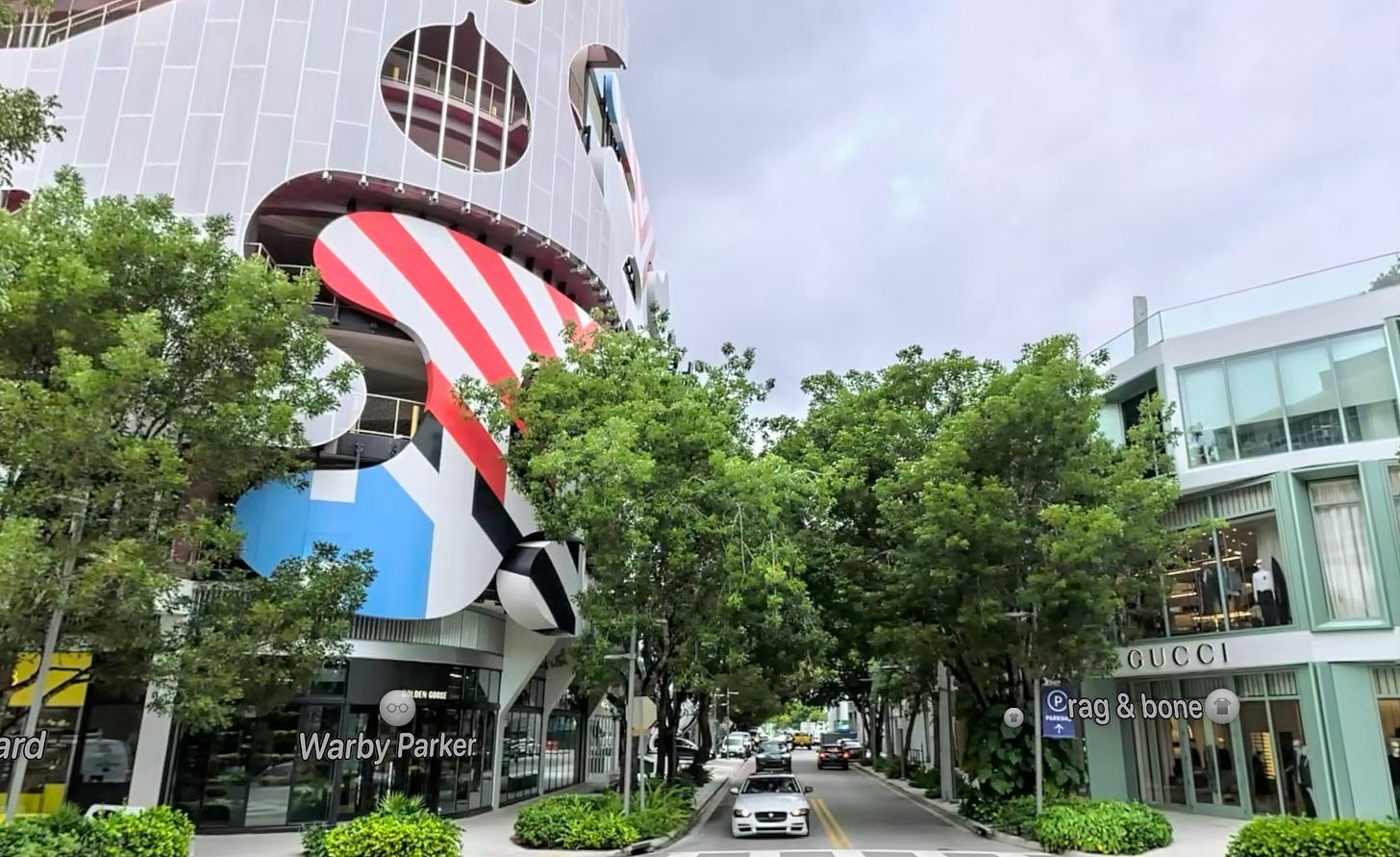As I’m reading a book on the Chicago School of Architecture, the most influential and innovative period in modern design history, my attention again moves toward another city that seems primed to take center stage in design in the mid 21st Century: Miami.
After two Miami work trips in two years, I’m pleased to say that it is leading the way in design leadership and integration into the public. And doing so in a way that showcases Miami’s unique and colorful design culture and history.
While New York has fashion-centric districts like SoHo and architecture-friendly MoMA (though not as innovative as it once was) as well as the High Line to showcase contemporary design, it still lacks a central ‘design district' to celebrate and promote the practice of design. Instead, design is scattered across the city in high end institutions for those that can afford it.
Lack of connection causes a lack of innovation in design as well as the city life and culture of New York. Miami, on the other hand, is thriving because design connects.
The Miami Design District, while also heavily anchored by fashion and some furniture stores, wants to be more than just another SoHo. It is a full embrace of design and innovation. This is apparent in its building designs, notably the parking garages (!): Museum Garage is the boldest parking structure in a city that is innovating this banal typology (wishing New York could innovate similarly to reduce parking issues) like no other city. It was designed by a collection of architects led by Terence Riley, including WORKac, J.Mayer H., Clavel, Nicolas Buffe and Kennen/Riley. And that is just one design work of many.
Perhaps the focal point of the MDD is the Palm Court’s Fly Eye Dome, designed by Buckminster Fuller, next to the glass facade of Sou Fujimoto. Closeby is another peculiar design: a torso and head of Le Corbusier with a design that looks more like an ode to Fuller than Corbusier.
What is missing from the Miami Design District? A good architecture institute or museum. The AIA Miami Architecture Center is currently moved into the Perkins and Will firm in Coral Gables, perhaps until a permanent home is found. Architecture firms in Miami need to come together and build a center in the Design District.
Technology and business innovation follows design and culture, and Miami will prove this once again. Downtown Miami is feeding a real estate and architecture boom, and just about every star designer is developing an apartment in Miami or Miami Beach. But that is just a sign of a deeper vibrant design culture.
In view of Miami from the water, the Zaha Hadid One Thousand Museum Building stands out amongst Meieresque white modern towers that line the downtown skyline. While mid-century Miami condos are having structural renovation problems, it doesn’t seem to be stopping development of new white and glass showpieces.
While the downtown Miami skyline is booming, and an economic and innovation boom likely to follow, the true heart of Miami is still Miami Beach — the iconic Art Deco district that captures the colorful heart of the culture.
Without the leadership of Barbara Baer Capitman, the Miami Beach Architectural District would have been lost like so many other historic designs. The district was saved in 1979 in an area of mindless development, similar to our own era, where design is sacrificed to satisfy a bureaucratic or social narrative. Without Capitman saving this heart of Miami, there would likely be no building boom, design district, innovation trend or economic renaissance.
Design is the key connection between culture, innovation and economics. We should start acting like it.






